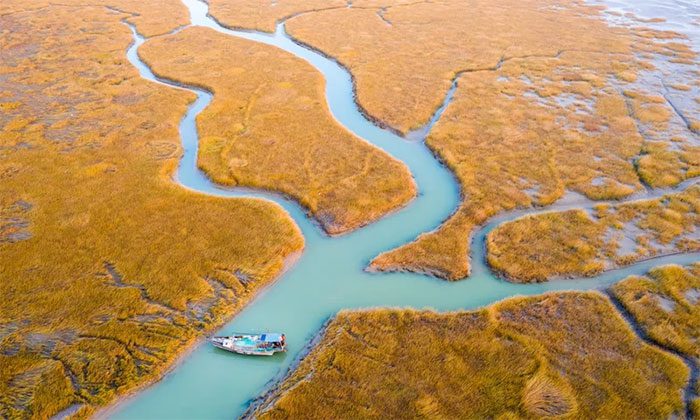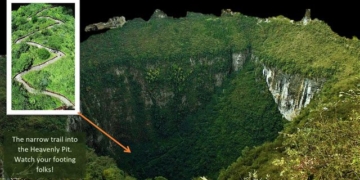A recent study reveals that nearly half of the river estuaries around the world have been altered by human activity, and 20% of these estuaries have disappeared in the past 35 years, particularly in Asian countries.
River estuaries – where rivers meet the sea – are often referred to as the “nursery of the sea.” These areas are crucial for the breeding of many fish species and serve as habitats for a wide variety of birds. The surrounding salt marshes help stabilize coastlines and prevent flooding.

A fishing boat moves in the Yellow River estuary, Shandong Province, China. (Photo: Guardian).
However, a new study indicates that nearly half of the river estuaries worldwide have been changed by humans and 20% of river estuaries have disappeared in the last 35 years.
Using satellite data, researchers measured changes occurring at 2,396 river estuaries from 1984 to 2019.
The results, published in the journal *Future Earth*, show that over the past 35 years, more than 100,000 hectares of river estuaries have been transformed into urban or agricultural land, with the majority of this loss (90%) occurring in developing Asian countries.
In contrast, losses of river estuaries have been minimal in high-income countries over the past 35 years, primarily because significant changes to river estuaries occurred decades ago during those nations’ rapid development phases.
Many high-income countries are now recognizing and addressing the damage caused by these changes. For instance, the United Kingdom has invested in the Tees River estuary to restore the area back to wetlands and salt marshes, which helps reduce flood risks, enhances resilience to climate crises, replenishes fish populations, and allows nature to recover.




















































